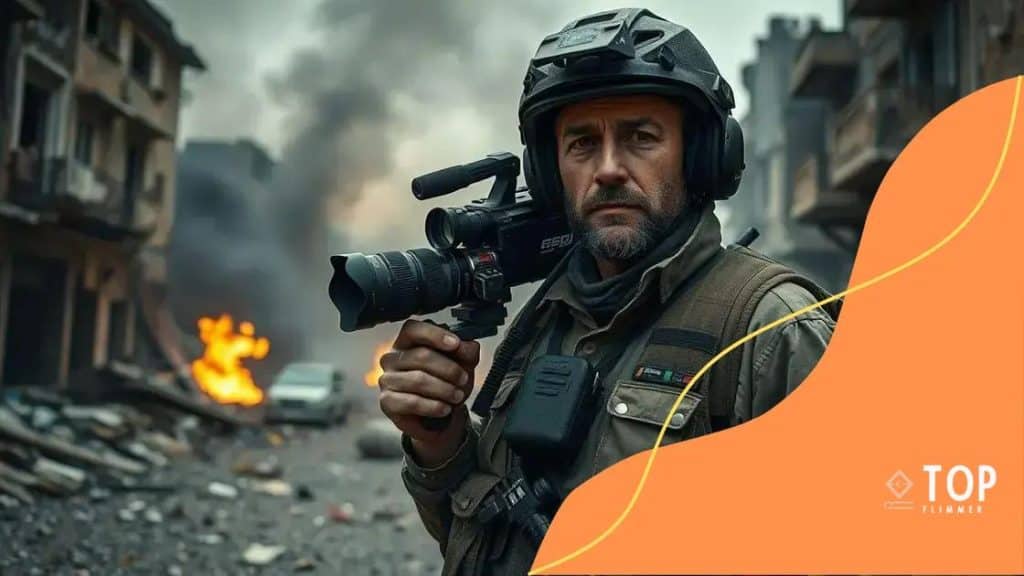Journalism in conflict zones: navigating risks and ethics

Journalism in conflict zones involves navigating physical dangers and ethical dilemmas while utilizing technology and local voices to provide accurate and impactful reporting.
Journalism in conflict zones poses not just physical dangers, but also ethical challenges that can shape public perception. Have you ever wondered what guides reporters in these volatile environments?
Understanding the unique challenges of conflict journalism
Understanding the unique challenges of conflict journalism is essential for those venturing into this dangerous field. Journalists face obstacles that range from physical dangers to ethical quandaries that can define their careers.
Physical Risks
One of the most daunting aspects of this profession is the risk to personal safety. Journalists often work in war zones where threats from armed groups can be high.
- Injury from bombings
- Kidnapping concerns
- Safety from hostile crowds
- Limited access to medical care
These risks can create immense stress and require journalists to have a well-thought-out safety plan. The adrenaline can help reporters stay alert, but it can also lead to burnout over time.
Ethical Dilemmas
Apart from physical dangers, conflict journalists often face tough ethical decisions. When covering sensitive subjects, they must remain impartial. It is vital to report the truth without compromising their safety.
Some key considerations include:
- Informed consent from sources
- The potential impact of their stories
- Balancing the need for information with the safety of individuals
While their goal is to inform the public, they also have a responsibility toward the people they report about. This balancing act can be incredibly challenging.
Furthermore, journalists in conflict zones must navigate the landscape of misinformation. With the rise of social media, false narratives can spread rapidly, adding another layer to their challenges. They must verify their sources meticulously.
In summary, navigating the unique challenges of conflict journalism is no simple task. The interplay between safety, ethics, and accurate reporting is a constant struggle. Journalists have to remain vigilant and adaptable to ensure their work shines a light on truth, even in the darkest situations.
Ethical dilemmas faced by journalists in war zones
Ethical dilemmas faced by journalists in war zones are numerous and complex. These reporters often find themselves in situations where their moral judgments are tested. It is crucial for them to tread carefully as their actions can have significant consequences.
Balancing Truth and Safety
One of the biggest challenges is balancing the need to report the truth while ensuring the safety of sources and themselves. A journalist may come across valuable information that the public needs to know, but sharing it might put lives at risk.
- Deciding whether to reveal the identity of sources
- Weighing the risks associated with publishing sensitive information
- Evaluating the impact of their reporting on local communities
These decisions require a delicate touch and a keen understanding of the stakes involved. Journalists must have a strong ethical compass guiding their choices.
Informed Consent and Exploitation
Another pressing ethical concern is obtaining informed consent from individuals who share their stories. Many journalists strive to provide a voice to the voiceless, but they must do so responsibly. Exploiting vulnerable individuals in war-torn areas can lead to further harm.
A few vital aspects journalists must consider include:
- Ensuring that individuals fully understand how their stories will be used
- Respecting the wishes of sources who may wish to remain anonymous
- Seeking out a balance between storytelling and protecting individual privacy
Additionally, there is the challenge of representation. Journalists need to be aware of the narratives they amplify. They should avoid perpetuating stereotypes or missing the broader context of the conflict.
Ultimately, ethical dilemmas in war zone journalism encompass the need for honesty, respect, and accountability. The choices they make can shape public perceptions and influence the course of events.
The importance of safety and risk management

The importance of safety and risk management in journalism cannot be overstated, especially in conflict zones. Journalists working in these environments need to take proactive steps to protect themselves and others while ensuring accurate reporting.
Understanding Potential Risks
Before entering potentially dangerous areas, it is vital for journalists to understand the risks involved. Knowledge of the surrounding environment can help them prepare for the unexpected. They must consider both physical and emotional threats.
- Physical risks, including attacks and natural disasters
- Emotional toll, such as stress and trauma
- Legal implications of their reporting
By identifying these risks, journalists can develop strategies to minimize them. This awareness is the starting point for effective risk management.
Creating a Safety Plan
Every journalist should have a well-defined safety plan. This plan outlines procedures for various scenarios, including evacuation routes and communication methods. Having a support system is also essential.
Key components of a safety plan include:
- Establishing a check-in system with colleagues or loved ones
- Carrying emergency supplies, like first aid kits
- Receiving training in hostile environment awareness
Furthermore, journalists must stay informed about the latest developments in the regions where they work. Current information about conflicts can help them make necessary adjustments to their plans.
Building a network of contacts can also enhance safety. Knowing local customs and connecting with trusted locals can provide invaluable insights and guidance. These relationships can be crucial during emergencies.
The significance of safety and risk management in journalism really comes down to effective preparation. Journalists committed to their safety will be better equipped to focus on their reporting, ultimately providing a more accurate and reliable narrative.
Case studies of impactful reporting in conflicts
Case studies of impactful reporting in conflicts showcase how journalism can shape perceptions and influence change. Examining these examples allows us to understand the power of storytelling in times of crisis.
Journalist Coverage in Syria
One significant case is the reporting from Syria, where journalists like Marie Colvin brought attention to the humanitarian crisis. Her brave reporting highlighted the suffering of civilians caught in the violence, compelling the global audience to pay attention to the conflict.
- Used detailed anecdotes to illustrate daily challenges.
- Created a sense of urgency about humanitarian needs.
- Helped mobilize international aid response.
Marie Colvin’s work had resonating impacts, demonstrating how personal stories can illuminate larger issues in conflict zones.
Reporting on the Rwandan Genocide
Another striking example is the coverage of the Rwandan Genocide. Journalists faced immense challenges while trying to report from within the chaos. Reports from the ground provided the world with a clearer understanding of the atrocities.
By focusing on individual stories, reporters were able to:
- Convey the emotions and horror of the situation.
- Document historical facts for future accountability.
- Encourage global action and intervention.
These accounts became a vital part of the historical record, showcasing the role of journalism in preserving truth during crises.
Moreover, the impact of these reports encouraged media organizations to evaluate how they approach conflict reporting. They began to prioritize safety for journalists and accuracy in their accounts. Such learning highlights the long-term effects that impactful journalism can have, not only on immediate situations but on future reporting standards as well.
Future trends in conflict zone journalism
Future trends in conflict zone journalism are essential to understand as the media landscape continuously evolves. As technology advances, the way journalists report from conflict areas is changing, making it crucial to adapt to new challenges.
The Rise of Technology
One prominent trend is the increasing use of technology in conflict reporting. Drones, for example, allow journalists to capture images and footage that are difficult to obtain on the ground. This aerial perspective can provide crucial context that enhances storytelling.
- Improved data collection through satellite imagery.
- Utilizing social media for real-time information gathering.
- Offering virtual reality experiences to create immersive stories.
These technological advancements give reporters the tools needed to cover conflicts more comprehensively.
Focus on Local Voices
Another trend is the emphasis on reporting local perspectives. As global audiences demand more authentic narratives, journalists are seeking to include the voices of those directly affected by conflicts. This approach fosters a deeper understanding of the complexities involved.
Key aspects of this trend include:
- Conducting interviews with local civilians to humanize stories.
- Collaborating with local journalists who have on-the-ground knowledge.
- Highlighting community resilience amidst crises.
By focusing on local stories, journalists help to create a more nuanced picture of events.
Additionally, ethical considerations are becoming more prominent in conflict reporting. Journalists are increasingly aware of their impact and responsibility when telling stories from war-torn regions. This shift emphasizes the importance of respectful and accurate representation, particularly for vulnerable populations.
The future of conflict zone journalism is also likely to see stronger collaborations between media organizations and humanitarian groups. These partnerships can enhance the safety and effectiveness of journalists operating in dangerous environments. By working together, they can better protect journalists and ensure that critical information reaches the public.
FAQ – Frequently Asked Questions About Journalism in Conflict Zones
What is the role of technology in conflict journalism?
Technology, such as drones and social media, enhances the ability of journalists to gather and report information quickly and accurately.
Why is it important to include local voices in conflict reporting?
Including local voices provides authentic perspectives that enrich narratives and deepen the audience’s understanding of the situation.
What ethical considerations do journalists face in conflict zones?
Journalists must balance the need for truthful reporting with the safety and rights of individuals involved in their stories.
How can partnerships improve journalist safety in conflict areas?
Collaborating with NGOs and humanitarian organizations can provide assistance and resources to ensure journalists work safely and effectively.






